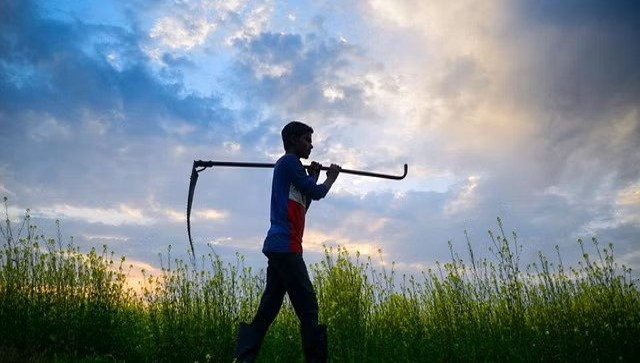)
- Select a language for the TTS:
- UK English Female
- UK English Male
- US English Female
- US English Male
- Australian Female
- Australian Male
- Language selected: (auto detect) - EN
Play all audios:
INDIAN LABORATORIES ARE HOTBEDS OF INNOVATIONS, BUT NOT MANY OF THEM FIND THEIR WAY TO THE MARKET read more Agriculture has been the mainstay of economic activities, nutritional and human
sustenance since man first learned to till the land. However, with the changing climatic, economic and anthropogenic conditions, agriculture is under tremendous pressure to provide
nutritious food and sustain the ever-increasing mouths to feed. Indian agriculture is not untouched by this pressure. Yes, we became a food surplus country because our food grain production,
which was merely 51 Mt in 1950/51 increased over six times to over 314 Mt in 2022, but is it sustainable growth? Are our crops achieving their maximum yield? Are our crops and soil really
responding to the current fertilization practices? Do Indian farmers understand the importance of nourishing the crop and not solely the soil? Are Indian farmers prepared to embrace
precision agriculture? These are just some of the questions that pose a threat towards the goal of achieving sustainable agriculture. India’s progress in developing a sustainable linkage
between farming and food security is slow. It’s time to establish a comprehensive strategy for 2024 and beyond that not only addresses the immediate concerns but also fosters long-term
sustainability. First and foremost, let us make our farmer, a smart farmer by addressing their lack of knowledge about soil and crop needs. It’s time we dive into accurate soil testing and
leaf analysis and educate farmers about the importance of secondary and micronutrients (beyond NPK). We must also focus on educating them about improving micronutrient use efficiency by
using coated fertilizers. Additionally, both broad acreage and horticulture farmers should be equipped to adapt foliar nutrition to supplement soil-applied nutrients, especially at critical
stages of the life cycle to boost productivity and quality. The Government of India has distributed more than 23 crore soil health cards and thus, it should be made sure that all essential
nutrient input is in line with these. Farmers should be made aware of how to build an immune and resilient agriculture. Indian laboratories are hotbeds of innovations, but not many of them
find their way to the market. Lab-to-land and agriculture extension programmes should be strengthened to promote sustainability and link traditional agriculture with modern technology.
Further, encouraging private sector contributions through a matching grant fund can motivate researchers and scientists to participate in this field. Services like digital infrastructure for
agri-stack, in collaboration with the private sector, pave the way for swift implementation of technology to improve sustainable agricultural practices. Going ahead, the government must
consider establishing a Centre for Excellence (CoE) for data science applications in agriculture. Providing Agtech companies tax breaks would also accelerate the adoption of precision
farming solutions, technology-enabled aggregation and distribution of farm produce. In steering the journey of Indian agriculture in 2024, sustainability must be at the forefront of our
strategies. By embracing advanced technology, digital agriculture initiatives, and targeted measures to address each challenge, India can secure a resilient and prosperous future for its
farmers and contribute significantly to global agricultural sustainability. This will certainly position India as a global leader in responsible agricultural practices and help build a
climate-smart and resilient agriculture. _The author is Business Development Manager (YaraVita), Yara India. Views expressed in the above piece are personal and solely that of the author.
They do not necessarily reflect Firstpost’s views._ _Read all the LATEST NEWS, TRENDING NEWS, CRICKET NEWS, BOLLYWOOD NEWS, INDIA NEWS and ENTERTAINMENT NEWS here. Follow us on Facebook,
Twitter and Instagram._ End of Article









